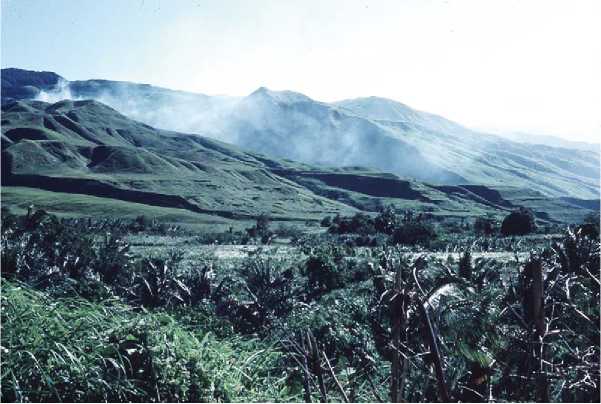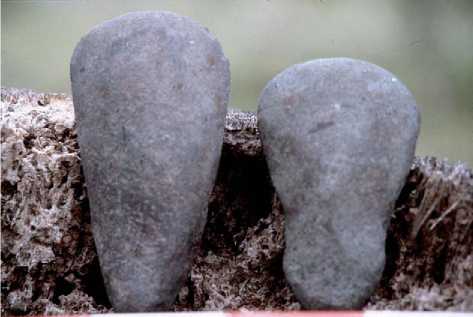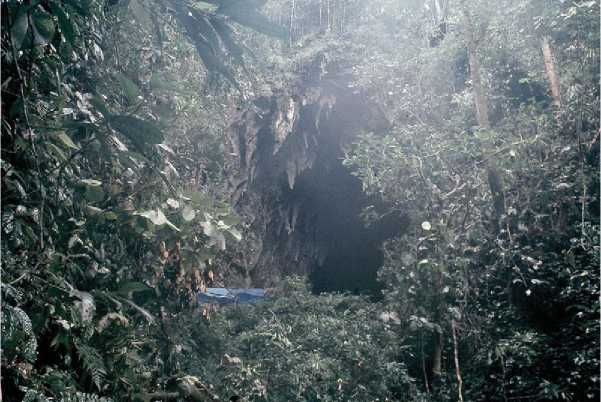There are long and short chronologies for the initial occupation of Near Oceania. The former is based on luminescence dating and the latter on radiocarbon. The short model proposes that people first arrived in Greater Australia and nearby archipelagoes no more than about 45 000 BP (Figure 1). The long chronology asserts that this is because radiocarbon cannot reliably date anything older. Luminescence methods date colonization at 50 000-60 000 BP. It is reasoned that much older dates are implausible because there is no evidence of that antiquity in Tasmania, which was connected to the mainland between 62 000 and 70 000 BP.
The short chronology rejects dates older than 45 000 BP for three main reasons. First, no older dates have secure stratigraphic associations with undoubted cultural remains. Second, the long chronology does match knowledge of modern human dispersal elsewhere in the world. There are no modern human remains in Island Southeast Asia - through which the first migrants to Australia must have passed - older than 45 000 years. Lastly, the calibration of luminescence dates to calendar and radiocarbon dates is not well understood, so very old luminescence determinations may in fact be the same in calendar years as younger radiocarbon dates.
There are no dates of any sort older than 40 000 BP for human activity in New Guinea, the Bismarcks, or the Solomons (Figure 2). In the short chronology this is taken to mean that the whole of Near Oceania was settled in a single migratory process, although available radiocarbon dates indicate that the New Guinea highlands, the Solomons and the Admiralties may not have been settled until around 10 000 years later than the rest. The long chronology argues instead that the different dates for initial settlement of Australia and New Guinea mean colonization occurred at different times and by different routes even though the two landmasses were joined at the time.
It will be some time before this matter can be settled. Only four sites with Pleistocene deposits have been excavated in coastal New Guinea. Only two, Jo’s Creek and Lachitu Cave, date to the period of initial colonization and no detailed reports are available for any of them. More work has been done in the New Guinea highlands, but we still know very little about initial settlement of the uplands. Work at the two most ancient highlands sites indicates among other things that the earliest stone artifacts include distinctive ‘waisted’ tools (i. e., notched for a handle;

Figure 1 The raised coral terraces of the Huon Peninsula, NewGuinea, in the vicinity of the 40 000-year-old Jo’s Creek site. Photograph by author.

Figure 3
Author.
Ground stone tools, New Guinea. Photograph by

Figure 2 Misisil Cave, western New Britain, the first Pleistocene site discovered in the Island Pacific. Photograph by author.
Figure 3). Similarities between such tools and certain artifacts in Australia may reflect the introduction of a technological tradition of Asian origin common to all of Sahul’s first inhabitants. Waisted tools have also been found at Jo’s Creek, where they have been speculatively linked with very early forest clearance.
Some of the highlands sites also contain the remains of extinct ‘giant’ species of animals. Collectively known as ‘megafauna’, such creatures lived throughout Sahul and their hunting by humans has been linked with the patterns in which the continent was colonized. Popular accounts usually paint ‘blitzkrieg’ scenarios in which the new colonists rapidly eliminated the megafauna. Faunal extinctions are commonly associated with human colonization, as is the case in Remote Oceania, discussed below. There is however no evidence that this occurred with the Megafauna in Near Oceania. There is only a handful of sites in Sahul where there is any indication of interaction between people and extinct giant fauna, and none where there is unambiguous evidence for hunting, let alone mass extermination.
First used some 39 500 years ago, Buang Merabak cave in central New Ireland contains the earliest evidence for colonization of the Bismarcks. There are dates of the same general magnitude from elsewhere in New Ireland as well as from coastal and interior sites in New Britain. There is very little evidence from the Bismarcks for the period following the first influx of people until about 20 000 BP. It seems that the first settlers were at least partly coastally oriented, as all early coastal sites contain marine mollusk remains. This focus is logical, given the sea-crossings involved in colonizing the islands. However, there are few fish bones in the sites and people also exploited forest fauna such as birds and bats, suggesting the first colonists were relatively generalized foragers rather than marine specialists. A generalized foraging strategy was probably critical to the success of the movement of people from northern Sahul (i. e., New Guinea) to Island Melanesia, where the diversity and richness of the terrestrial and near-shore marine biota diminish dramatically with increasing distance east.
There may have been another significant migration around 28 000 BP, the oldest date yet obtained for the colonization of the main Solomons chain. This movement required a 180-km open-sea crossing from New Ireland and it seems there was little interaction with the Bismarck Archipelago after the shift occurred. The move saw people encounter an environment biotically even more depauperate than the Bismarcks. In the Pleistocene the Solomons had only a restricted range of bats, rats, and reptiles. The cuscus (phalan-ger) that was important human prey in the Bismarcks at that time does not appear in the Solomons until the Late Holocene. Moreover, although the diversity of pelagic fish was probably relatively constant throughout the Indo-Pacific region, the reefs of the Solomons are less diverse than those of the Bismarcks.
There was another significant change around 22 000-20 000 BP. This is when people occupied the Admiralties for the first time, by island-hopping from New Ireland and/or the north coast of Sahul/New Guinea. Both routes were used in the historical period and both regions have more recent archaeological connections with the Admiralties. This movement required an open-sea journey of over 200 km, about a third of which would have been out of the sight of land. This makes it the longest sea journey anywhere in the world up to this time and the only attested Pleistocene voyage beyond the limits of island intervisibility. The significance of this event as a milestone in human migration should not be underestimated. Even today the journey requires capable marine craft and noteworthy navigational ability. Matters of voyaging are taken up again in general terms later.




 World History
World History









